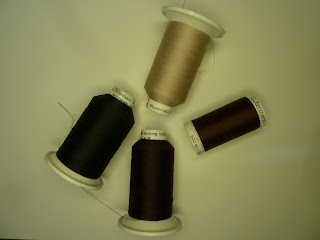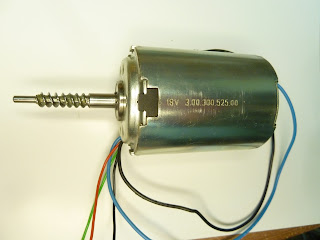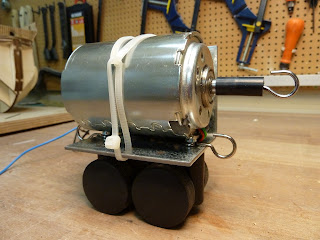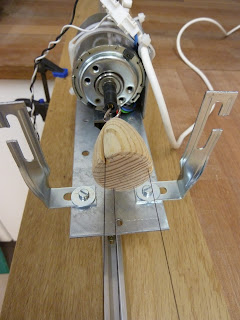To create strands from 1 or several yarns a device called whirls is needed.
For this project I decided to create a ropewalk which
makes ropes with 3 strands.
It should be as simple as possible, so in my mind I already
figured out what I would need to make the whirls to work and I build
it more or less from material I had lying around in my basement/scrapbox, except for
the three toothed pulleys and the toothed belt itself.
The bearings I used are from worn-out wheels from a
pair of in-liners and the size fits almost perfectly with the "spacer M4
M-F"
I decided that 1 bearing could do the job, and
"glued" them (and the spacers) in place with CA-glue.
To keep it as simple as possible I fitted the motor on
a bracket, and used brackets as well to mount the construction onto the
baseplate.
I only needed to use 2 wires of the motor (the
3 others are used to count the RPM of the motor).
With this simple design the whirls are DC motor driven
and turn smooth & synchronously. Amazing what CA glue is capable of J





























